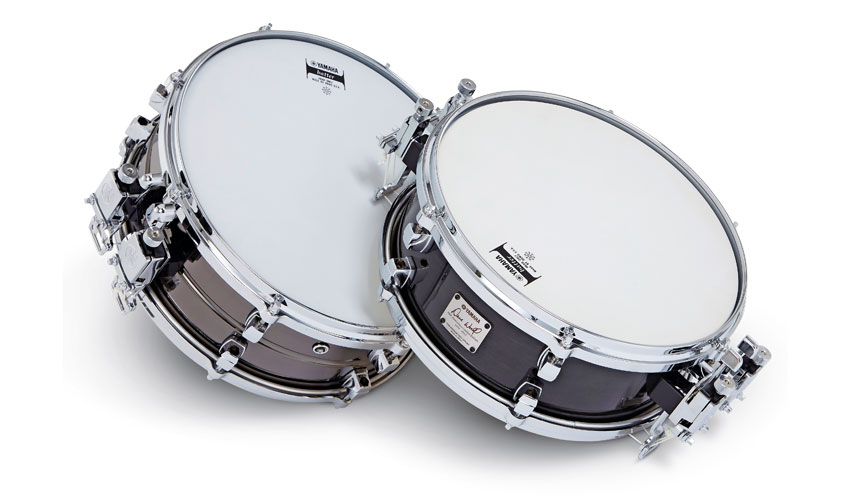MusicRadar Verdict
A limited edition brass snare that marks Dave Weckl's 30th anniversary as a Yamaha endorsee in fine style.
Pros
- +
Bomb-proof construction. Dual snares offer a useful range of tones.
Cons
- -
Pricey.
MusicRadar's got your back
2013 marks 30 years since Chick Corea legend Dave Weckl signed on the dotted line with Yamaha and begun a long-lasting professional relationship with the respected drum manufacturer.
His first signature drums with the firm, back in the early '90s, were aluminium and maple. His new limited edition model comes in brass and maple. Here we're taking the brass model for a spin.
Yamaha's UK Product Manager, Gavin Thomas, says, "Only 250 snares have been produced, with 10 for the UK market." They are probably destined to be expensive collectors' items.
Build
"What really sets this drum apart is the dual snares - a stainless steel snare and a parallel hi-carbon steel snare"
The new signature model has a 14"x51⁄2" shell of 1.2mm gauge brass with a strengthening centre bead, accurate 45° bearing edges and shallower 1.8mm snare bed. The finish is black nickel. Dave's previous metal drum was aluminium and a half-inch less deep.
There's a special commemorative badge stating 'Yamaha Dave Weckl Signature 30th Anniversary, Limited Edition, Hand Made in Japan' and we also have thickly chromed aluminium 3mm die-cast hoops with 12 chromed cube lugs.
What really sets this drum apart is the dual snares - a 14-strand stainless steel snare and a parallel 14-strand hi-carbon steel snare. The mounting of the twin, mirror-image P-Type strainers and G-Type adjustable butt-ends adds considerably to the weight. But the throw-offs are smooth, solid and positive, with additional adjustment at the butt-ends.
Hands On
One snare drum is not enough for many drummers - we are now so used to hearing multiple snare sounds on recordings. Kits with a main snare and a second snare are familiar live, and if both have dual snare wires then the sonic possibilities multiply greatly.
"Dave sets the hi-carbon wires tight for precision and the stainless steel wires looser for the buzz"
Dave Weckl himself says he always found that a single set of snares failed to offer sufficient flexibility or range, being invariably too tight or too loose. Hence his dual snares, which he sets with the hi-carbon wires tight for precision and the stainless steel wires looser for the buzz. Which is the way we set them for this review.
We wondered at first if the fact that the paired snares are inevitably mounted slightly off-centre would diminish the response, but no - engaging either snare individually, the drums respond normally and fully.
With the looser snares engaged on their own you really hear the big warm, hollow clonk from the brass shell. And with the tighter snares the rim shots from the thick aluminium hoops rattle the windows.
We asked Dave why the change to brass. His reply: "It has similar qualities to my old aluminium shell drum. It's very warm and has a nice crack to it, but the 'big warmth' factor is even greater. It's just a super-fat sounding drum that feels great to play. For some reason my signature double strainer system responds better on this drum as well."
Dave points Rhythm readers towards live footage where he plays this snare with guitarist Oz Noy.
Engaging both snare wires simultaneously did not unduly stifle the drum, although of course it tightens the response and elevates the pitch. We liked this effect. You almost get the best of both worlds where you can actually hear each snare working, one giving a tight edge, the other widening the response to a crunchier sound.
"Yes, its small proportions mean it’s somewhat restricted tonally, but forget what it can’t do and concentrate on the areas where it excels.": Gibson L-00 Special review
“A well spec’d device that bridges the gap between a basic stereo field recorder and a more advanced multitrack device”: Zoom H4 Essential review
Learn production, DJing and songwriting from pros like Fraser T Smith, Carl Cox, Skream and Joe Goddard with Whatclass










